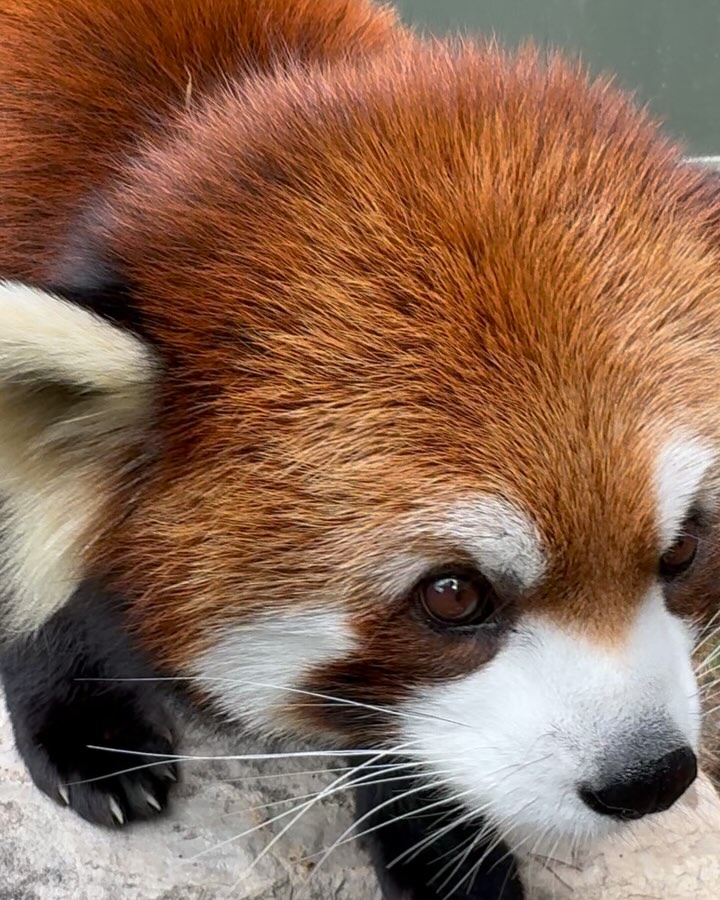- Red Panda Conservation and Their Habitat
- The Role of Zoos in Wildlife Conservation
- Greensboro Science Center’s Success in Promoting Red Pandas
- The Appeal and Popularity of Red Pandas
- Educational Importance of Sharing Wildlife Photography
Red Panda Conservation and Their Habitat
Red pandas, often overshadowed by their distant relatives, the giant pandas, possess a charm that has captured global attention. Originating from the temperate forests of the Himalayas, these animals inhabit stretches from Nepal to China. Their survival is intricately tied to forest ecosystems which are gradually dwindling due to human activities. Deforestation for agriculture and urban development poses constant threats, leading to habitat fragmentation and loss. Red pandas are arboreal and depend heavily on forested regions. With a diet predominantly comprising bamboo, their sustenance is compromised when these crucial green belts diminish.
Efforts in red panda conservation have become increasingly significant. Organizations across the globe, including the International Red Panda Network, work tirelessly to conserve these creatures and their habitat. This involves creating protected areas, promoting sustainable land management practices, and raising awareness about the panda’s ecological role. Local communities play a pivotal role; their engagement in conservation activities is imperative. Educational outreach that fosters coexistence and grassroots participation is critical in establishing effective conservation strategies.
The Role of Zoos in Wildlife Conservation
Zoos, once merely exhibitions of exotic animals, have transformed into centers for wildlife preservation and education. They contribute significantly to the conservation of endangered species like red pandas. Breeding programs within zoos, including the Red Panda Species Survival Plan, ensure genetic diversity and the long-term survival of species at risk. By participating in these programs, zoos help replenish wild populations through reintroduction efforts.
Moreover, zoos act as educational portals where visitors learn about biodiversity and its significance. They bridge the gap between people and wildlife, fostering a sense of stewardship towards biodiversity. The commitment of facilities like the Greensboro Science Center to such initiatives highlights the influential role zoos play in global conservation efforts. Through interactive exhibits and informative sessions, they instill an appreciation for the natural world.
Greensboro Science Center’s Success in Promoting Red Pandas
The Greensboro Science Center has emerged as a leader in promoting the conservation message of red pandas. Recently, they participated in a zoo animal contest and emerged victorious due to their dedication to animal welfare and conservation awareness. The center’s success in this competition is a testament to its commitment to conservation and education. Programs at the center are designed to educate the public on the significance of maintaining biodiversity and the threats faced by species like the red panda.
Research and conservation efforts at the Greensboro Science Center are supported by collaborations with other institutions. This network strengthens their ability to contribute to global conservation goals. Their work extends beyond species preservation, focusing on habitat conservation and community engagement globally. The victory in the competition is an acknowledgment of the center’s outreach prowess and commitment to making a tangible difference in conservation.
The Appeal and Popularity of Red Pandas
Red pandas possess a captivating charm that attracts audiences of all ages. Their strikingly colorful fur, bushy tails, and playful demeanor make them highly engaging animals for zoo visitors and wildlife enthusiasts. This popularity plays a significant role in drawing attention to their conservation plight. The public’s affection for these animals translates into greater support for conservation initiatives, which can drive funding and policy change.
Red pandas have become emblematic representations in media and literature, further elevating their status and ensuring they remain a topic of interest. The emotional connection formed through storytelling and media portrayal has proven to be a powerful tool in advocacy. By capturing the hearts of many, red pandas serve as ambassadors for broader conservation efforts.
Educational Importance of Sharing Wildlife Photography
Visual storytelling through wildlife photography has emerged as an indispensable educational resource. Photography and videography of red pandas offer a window into their natural behaviors and environments. These images not only mesmerize audiences but also inspire action. They play a crucial role in wildlife education, offering an unfiltered glimpse into the lives of animals often unseen in their natural habitats.
Platforms like social media amplify these messages, reaching wider audiences and engaging communities in conservation dialogues. The act of sharing such photography from places like the Greensboro Science Center enhances public awareness and stimulates interest in conservation topics. Enabling the public to visually experience the beauty and understand the struggles faced by wildlife encourages advocacy and support for conservation initiatives.
Through photographic documentation, people gain insight into the lives of red pandas and the ecosystems they inhabit. This visual evidence becomes an experiential learning tool that bridges distances and fosters a global conservation consciousness. By appreciating the natural world’s diversity and complexities through these images, a greater respect and understanding for the environment we share is cultivated.
Incorporating these insights into education and outreach efforts can help inform and inspire future conservationists and naturalists. The narrative woven through photographs and videos can motivate individuals and communities to take active roles in preserving our planet’s biodiversity.
*****
Source Description
I promised a huge drop of red panda photos from @greensborosciencecenter if they won the recent zoo animal competition and they crushed it, so here are twenty of my favorite photos and videos from my various visits there!


